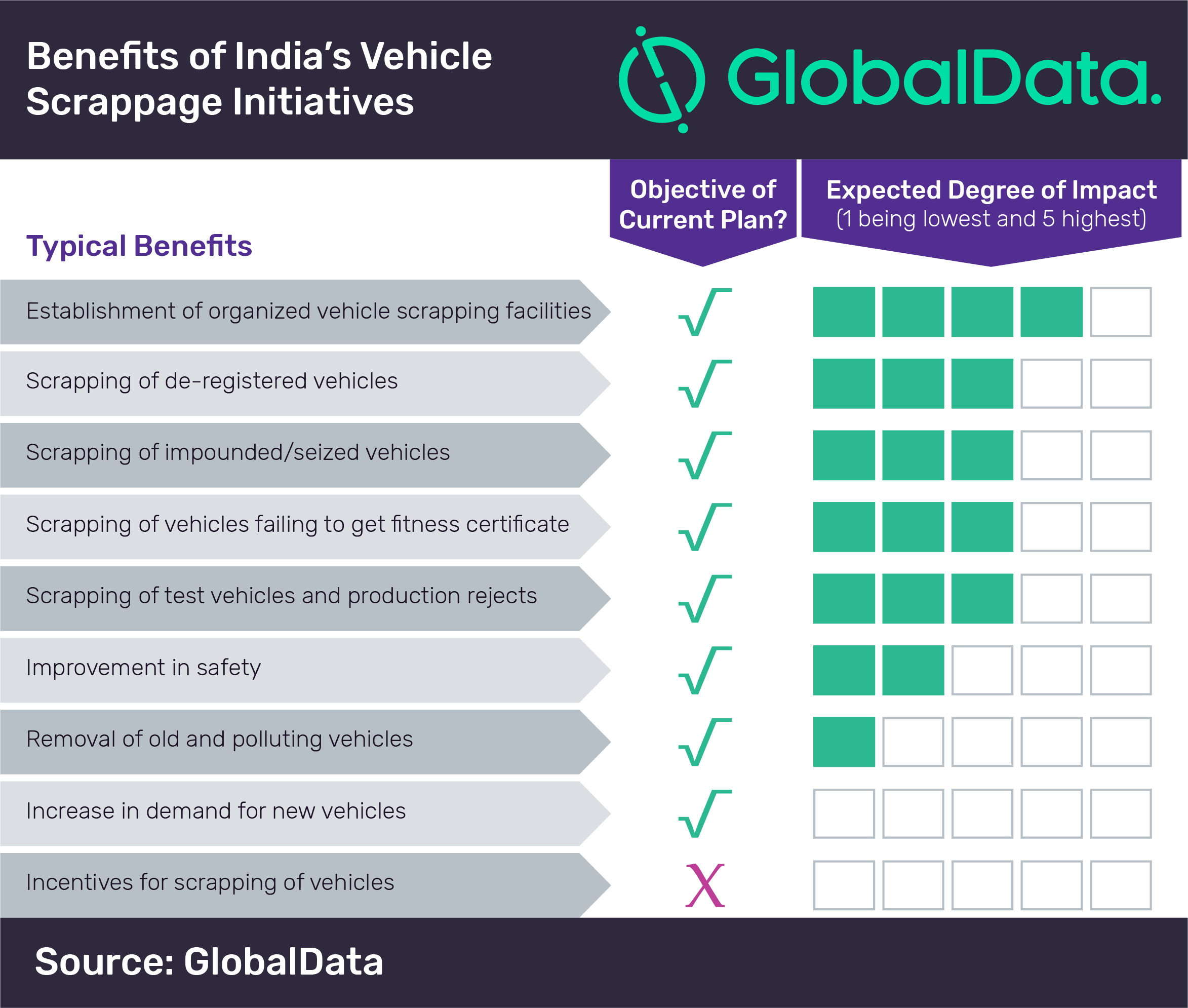India’s vehicle scrappage plan unlikely to produce desired results, says GlobalData

Following the news that India has issued draft guidelines for setting up authorised vehicle scrapping facilities across the country, Animesh Kumar, director of research and consulting company Automotive Consulting at GlobalData, warns that the current scrappage initiative is “unlikely” to produce the desired results.
“The draft guidelines released by the Ministry of Road Transport & Highways (MoRTH) will certainly be beneficial and help in creating organised sector for vehicle scrapping. However, they are unlikely to produce the desired results. Broadly, there are two elements of a typical scrappage plan. The first is about ‘retiring vehicles from the road’ wherein old vehicles or vehicles that are no longer roadworthy are discarded. The process can be voluntary or statutory and is based on the ‘end of life’ norms. Such norms define the maximum age and/or mileage of a vehicle after which it must be scrapped. The second element of a scrappage plan is about the actual process of scrapping the vehicles. The current draft guidelines deal with the second element while largely ignoring the first element.
“An all-encompassing scrappage policy that includes end-of-life vehicle norms has several benefits. They include increase in safety, environment-friendliness and growth in new-vehicle demand. Currently, when automotive industry in India is experiencing a painful slowdown, the market participants were hoping for an ‘end of life’ policy that can help in reviving the market through creation of replacement demand. Moreover, inclusion of incentives for voluntary scrapping of vehicles – similar to ‘Cash for Clunkers’ program used in the US in 2009 – could have encouraged vehicle owners to trade-in their old vehicles.
“While the draft guidelines will provide multiple benefits, the scrappage initiative in the present shape is unlikely to produce visible results. However, they can be viewed as the first step in the journey towards a robust vehicle scrappage program. Once organized scrappage facilities come up and are fully functional to handle the demand, the government may then introduce the end-of-life norms. In such an event, it may coincide with the revival of the auto industry, which is expected in 2021 – i.e., after the market settles down post implementation of BS-VI emission norms. In addition to generating demand for replacement vehicles, it will usher in safer and greener vehicles.”





Comments